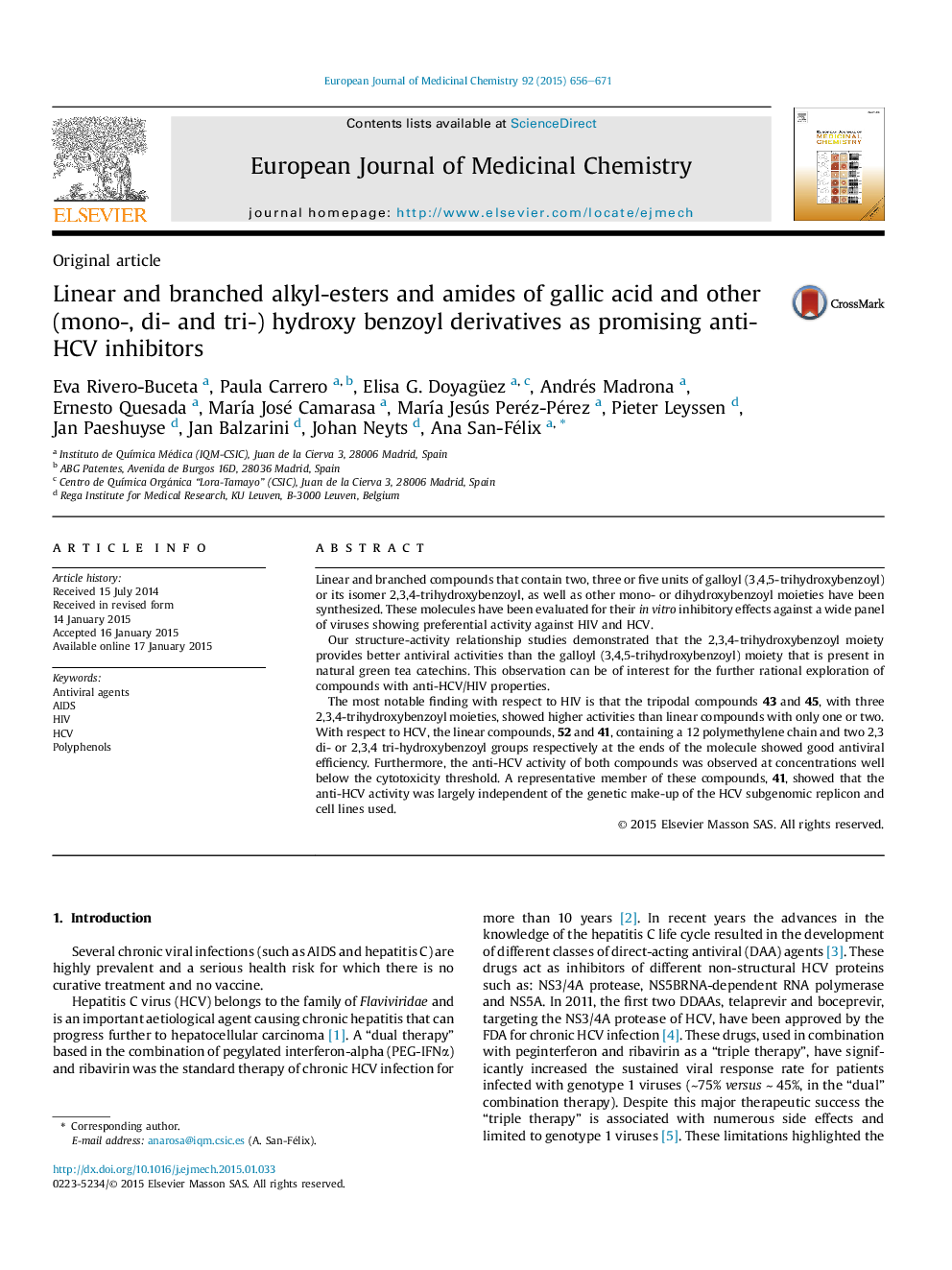| Article ID | Journal | Published Year | Pages | File Type |
|---|---|---|---|---|
| 1394022 | European Journal of Medicinal Chemistry | 2015 | 16 Pages |
•A collection of linear and branched polyphenols were synthesized and evaluated as antivirals.•Branched derivatives 43 and 45 proved to be the most actives against HIV.•Linear derivatives 41 and 52 proved to be the most actives against HCV.•2,3,4-Trihydroxyphenyl moiety provides better antiviral activity than the galloyl moiety.•At least two contiguous hydroxyl groups on the aromatic ring seem to be important for activity.
Linear and branched compounds that contain two, three or five units of galloyl (3,4,5-trihydroxybenzoyl) or its isomer 2,3,4-trihydroxybenzoyl, as well as other mono- or dihydroxybenzoyl moieties have been synthesized. These molecules have been evaluated for their in vitro inhibitory effects against a wide panel of viruses showing preferential activity against HIV and HCV.Our structure-activity relationship studies demonstrated that the 2,3,4-trihydroxybenzoyl moiety provides better antiviral activities than the galloyl (3,4,5-trihydroxybenzoyl) moiety that is present in natural green tea catechins. This observation can be of interest for the further rational exploration of compounds with anti-HCV/HIV properties.The most notable finding with respect to HIV is that the tripodal compounds 43 and 45, with three 2,3,4-trihydroxybenzoyl moieties, showed higher activities than linear compounds with only one or two. With respect to HCV, the linear compounds, 52 and 41, containing a 12 polymethylene chain and two 2,3 di- or 2,3,4 tri-hydroxybenzoyl groups respectively at the ends of the molecule showed good antiviral efficiency. Furthermore, the anti-HCV activity of both compounds was observed at concentrations well below the cytotoxicity threshold. A representative member of these compounds, 41, showed that the anti-HCV activity was largely independent of the genetic make-up of the HCV subgenomic replicon and cell lines used.
Graphical abstractFigure optionsDownload full-size imageDownload as PowerPoint slide
